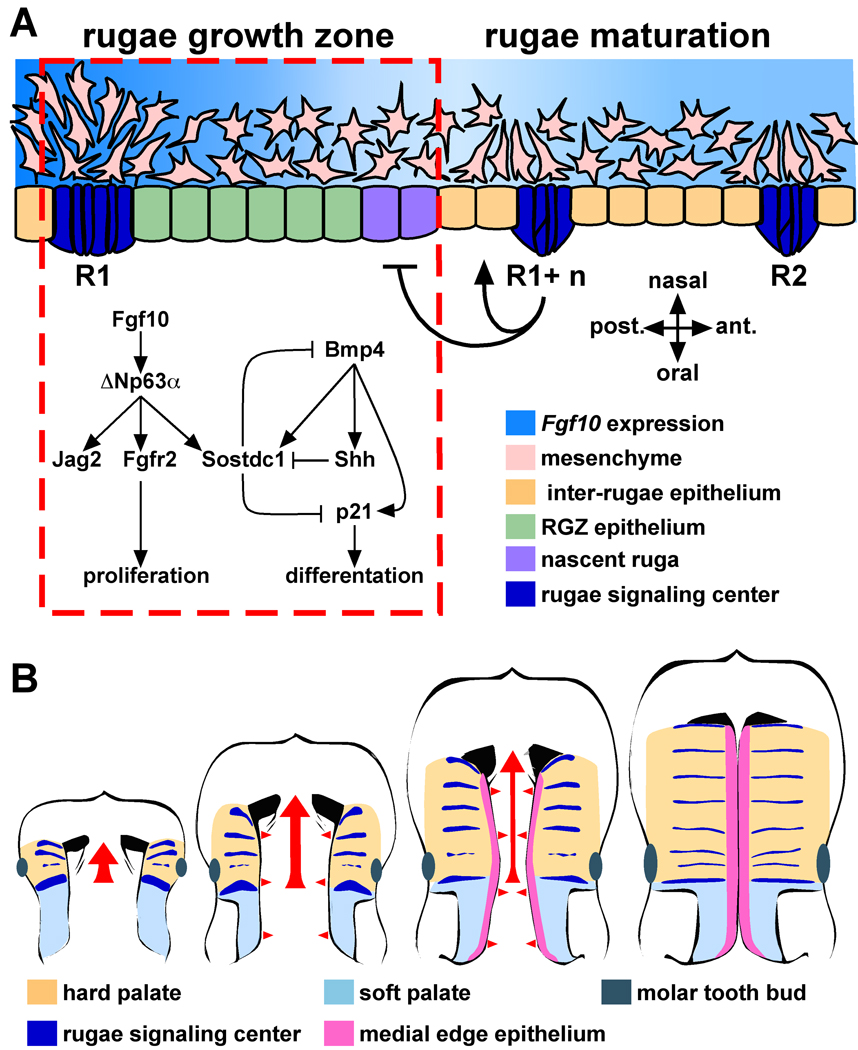Figure 10.
Models of the molecular and morphogenetic activity associated with the RGZ. (A) We suggest a model of molecular interactions integrating FGF10 and BMP4 signaling during rugae formation within the RGZ. Both Fgf10 and Bmp4 are required for epithelial expression of Shh. The RGZ acts as a source of both rugae and inter-rugae epithelium. Within the RGZ, Fgf10 is expressed in a gradient extending from R1 to the site of nascent rugae formation. We propose that FGF10 signaling, mediated through ΔNp63α and its targets Jag2 and Fgfr2b, maintains proliferation of epithelial progenitors at the posterior end of the RGZ. Epithelial expression of the Bmp4 antagonist Sostdc1 in the anterior palate also requires Fgf10. We found that similar to its role in tooth cusp patterning, Sostdc1 acts to restrict induction of Shh in the RGZ. We propose that the relative balance between FGF10 and BMP4 signaling is one component defining the A-P position of rugae formation. Induction of Shh and p21 expression results in cell cycle exit and epithelial differentiation while continued proliferation of inter-rugae epithelium moves the R1+n rugae away from the RGZ. Signals from the R1+n rugae (bar and arrow) are also proposed to influence the fate of RGZ epithelium. (B) The anterior growth of the anterior palate (tan) proceeds from the first formed rugae (red arrow) and is coincident with the establishment of segmental signaling domains (rugae). Fusion of the bilateral shelves requires medially directed growth (red arrowheads) and patterning of the medial edge epithelium (MEE, pink). The lateral boundary of the MEE coincides with the medial edge of the rugae, suggesting that signals from the rugae also participate in the intrinsic program that patterns the MEE. Thus, rugae and the RGZ provide a reference frame for visualizing the organization of signaling domains with respect to the anterior–posterior and medial-lateral patterning and growth of the palatal shelves.

